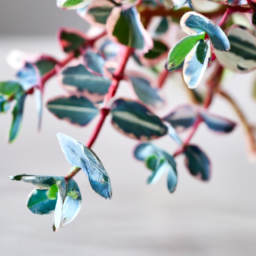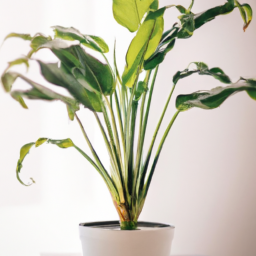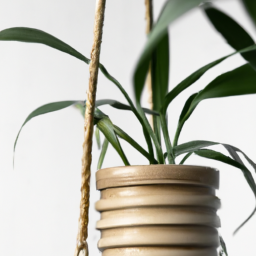
Have you ever wondered whether you should rotate your indoor plants? Well, the answer to the question “Should indoor plants be rotated?” might surprise you. Many plant enthusiasts debate whether rotating indoor plants is necessary or simply a myth. In this blog post, we will delve into the topic and explore the benefits and drawbacks of rotating your beloved green companions. So, if you’re curious about how rotating indoor plants can impact their growth and overall health, keep reading!
The Importance of Rotating Indoor Plants for Healthy Growth
Indoor plants not only add beauty and freshness to our living spaces but also provide numerous health benefits. They purify the air, reduce stress, and improve productivity. However, many plant owners overlook a crucial aspect of plant care – rotating indoor plants. Rotating your indoor plants is essential for their healthy growth and overall well-being. In this article, we will explore the reasons why rotating indoor plants is important and provide you with a step-by-step guide to ensure your plants thrive.
Why Should You Rotate Indoor Plants?
1. Balanced Growth: Indoor plants tend to grow towards the light source, which can result in uneven growth. By rotating your plants regularly, you ensure that all sides of the plant receive an equal amount of sunlight, leading to balanced growth and preventing the plant from leaning or becoming lopsided.
2. Preventing Phototropism: Phototropism is the natural response of plants to grow towards light. While this is beneficial for outdoor plants, it can cause issues for indoor plants. If a plant is constantly growing towards a window or a light source, it can become leggy and weak. Rotating the plant helps prevent excessive elongation and encourages stronger, more compact growth.
3. Enhancing Leaf Development: By rotating your indoor plants, you ensure that all sides of the plant receive adequate light. This promotes uniform leaf development and prevents the leaves from becoming sparse or yellowing on one side. It also encourages the plant to produce more foliage, making it look fuller and healthier.
When Should You Rotate Indoor Plants?
Now that we understand the importance of rotating indoor plants, let’s discuss when and how often you should do it. The frequency of rotation depends on various factors, including the type of plant, its growth rate, and the light conditions in your home. However, as a general guideline, it is recommended to rotate your indoor plants every 2-4 weeks.
It is best to rotate your plants during their active growth period, which is usually spring and summer. During these seasons, plants are actively producing new leaves and require more light for photosynthesis. By rotating them, you ensure that all sides receive adequate light and prevent any potential damage from excessive direct sunlight.
How to Rotate Indoor Plants?
1. Choose the Right Spot: Before rotating your indoor plants, identify a suitable location where they will receive the required amount of light. Consider the plant’s light requirements and choose a spot that provides similar conditions to its previous location.
2. Gently Remove the Plant: Carefully lift the plant from its current pot or container. Be cautious not to damage the roots or disturb the soil too much.
3. Rotate Clockwise: Rotate the plant in a clockwise direction, ensuring that each side receives an equal amount of light. If the plant has a dominant side, make sure to position it away from the light source to encourage growth on the other sides.
4. Repot if Necessary: If you notice that the plant has become root-bound or outgrown its current container, take this opportunity to repot it into a larger pot. This will provide more space for the roots to grow and promote healthier overall growth.
5. Water and Observe: After rotating and potentially repotting the plant, water it thoroughly and allow any excess water to drain. Place the plant in its new location and observe its response over the next few days. Monitor for any signs of stress or adjustment, such as wilting or yellowing leaves, and make necessary adjustments to the plant’s care routine.
6. Repeat the Process: Remember to rotate your indoor plants every 2-4 weeks to ensure balanced growth and optimal health. Regular rotation will help your plants thrive and keep them looking their best.
Conclusion
Rotating indoor plants is an essential practice for their healthy growth and overall well-being. By providing equal exposure to sunlight on all sides, rotating prevents uneven growth, phototropism, and enhances leaf development. Remember to rotate your plants every 2-4 weeks, especially during their active growth period. Follow the step-by-step guide mentioned above to ensure a successful rotation and enjoy the benefits of thriving, beautiful indoor plants.

Should Indoor Plants Be Rotated?
As an expert in indoor plant care, I am often asked whether rotating indoor plants is necessary. The answer is a resounding yes! Rotating your indoor plants regularly is crucial for promoting even growth and maintaining their overall health. In this article, I will provide you with a step-by-step guide on why and how you should rotate your indoor plants.
Why Rotate Indoor Plants?
1. Promotes Balanced Growth: Indoor plants tend to grow towards the direction of the light source. By rotating them, you ensure that all sides of the plant receive equal exposure to sunlight, preventing lopsided growth and encouraging a more balanced appearance.
2. Prevents Leaning: Without rotation, plants may start leaning towards the light source, resulting in an uneven distribution of foliage. Rotating your plants helps prevent this leaning and keeps them upright and visually appealing.
3. Maximizes Photosynthesis: By rotating your indoor plants, you expose different parts of the foliage to sunlight, maximizing the overall photosynthetic process. This increased exposure to light energy enhances the plant’s ability to produce food and grow healthily.
How to Rotate Indoor Plants
1. Determine the Light Source: Before rotating your indoor plants, it’s important to identify the primary light source in your space. This could be a window, a grow light, or any other artificial light source. Understanding the direction and intensity of the light will help you plan the rotation effectively.
2. Choose the Rotation Frequency: The frequency of rotation depends on the specific needs of your plants. As a general rule, rotating your indoor plants every two weeks is recommended. However, plants with a strong preference for light may require more frequent rotation, while those with low light requirements can be rotated less often.
3. Time Your Rotations: The best time to rotate your indoor plants is during their dormant or slow growth period. This usually occurs in late winter or early spring. Avoid rotating plants during their active growth phase, as it may disrupt their development and cause stress.
4. Rotate 180 Degrees: When rotating your indoor plants, turn them by 180 degrees to ensure all sides of the plant receive equal light exposure. This can be done by gently grasping the base of the plant and slowly turning it in the desired direction. Be cautious not to damage any delicate leaves or stems during the process.
5. Monitor and Adjust: After rotating your indoor plants, closely monitor their response. Observe if any leaves start turning towards the light source again or if new growth appears more prominently on one side. If necessary, make adjustments to the rotation schedule to address any imbalances.
6. Consider Plant-Specific Requirements: Different indoor plants have varying light requirements and growth patterns. Some plants, such as succulents, may need less frequent rotation due to their ability to tolerate low light conditions. Research the specific needs of your plants to ensure you are providing them with the optimal rotation schedule.
7. Clean and Maintain: While rotating your indoor plants, take the opportunity to inspect them for any signs of pests or diseases. Wipe down the leaves gently with a damp cloth to remove dust and promote better photosynthesis. Additionally, check the moisture levels in the soil and water accordingly.
Remember, rotating your indoor plants is a simple yet effective technique to ensure their even growth and overall health. By following these steps and considering the specific requirements of your plants, you can create an environment that promotes thriving indoor greenery.

Should Indoor Plants Be Rotated?
Indoor plants not only add beauty and freshness to our homes but also provide numerous health benefits. They improve air quality, reduce stress, and boost productivity. To ensure optimal health and growth of indoor plants, rotating them is a common practice. In this article, we will discuss the importance of rotating indoor plants and provide a step-by-step guide on how to do it effectively.
Why Should You Rotate Indoor Plants?
Rotating indoor plants is crucial for their overall health and growth. Here are a few reasons why you should consider rotating your indoor plants:
1. Balanced Growth: Rotating indoor plants helps in achieving balanced growth. When plants are exposed to sunlight from only one direction, they tend to grow towards the light source, resulting in uneven growth. By regularly rotating them, you ensure that all sides of the plant receive equal sunlight, promoting symmetrical and balanced growth.
2. Preventing Leaning: Without rotation, indoor plants may start leaning towards the light source. This is known as phototropism, where plants grow towards the light to maximize their energy absorption. Rotating the plants prevents them from leaning excessively and maintains an upright and aesthetically pleasing appearance.
3. Even Water Distribution: Rotating indoor plants helps in achieving even water distribution. When plants are rotated, water reaches all sides of the pot, preventing waterlogged areas and ensuring that the entire root system receives adequate moisture. This prevents root rot and other water-related issues.
Step-by-Step Guide to Rotating Indoor Plants
Now that we understand the importance of rotating indoor plants, let’s dive into a step-by-step guide on how to do it effectively:
Step 1: Choose the Right Time: The best time to rotate indoor plants is during their active growth period, which is typically spring or summer. Avoid rotating plants during the dormant winter months, as they require less light and may be more sensitive to changes in their environment.
Step 2: Assess Lighting Conditions: Before rotating your indoor plants, assess the lighting conditions in your home. Identify the brightest and darkest spots to understand where your plants will receive the most and least amount of light. This will help you determine the ideal placement for each plant.
Step 3: Determine Rotation Frequency: The frequency of rotation depends on the specific needs of your plants. As a general rule, rotate your indoor plants every 1-2 weeks to ensure even growth and prevent leaning. However, some plants may require more frequent rotation, while others may need less. Observe your plants closely to determine their individual requirements.
Step 4: Rotate 180 Degrees: When rotating your indoor plants, turn them 180 degrees in the same spot. This ensures that all sides of the plant receive equal exposure to light and prevents them from growing towards a specific direction. Make sure to handle the plants gently to avoid damaging the leaves or stems.
Step 5: Monitor Plant Reactions: After rotating your indoor plants, closely monitor their reactions. Check for any signs of stress or shock, such as wilting leaves or discoloration. If you notice any issues, adjust the rotation frequency or placement accordingly to provide the optimal conditions for each plant.
Step 6: Maintain Consistency: Consistency is key when it comes to rotating indoor plants. Make it a regular part of your plant care routine to ensure long-term health and growth. By consistently rotating your plants, you will maintain their overall appearance, prevent leaning, and promote balanced growth.
Remember, each plant has unique requirements, so it’s essential to research and understand the specific needs of your indoor plants. By following this step-by-step guide and paying attention to your plants’ reactions, you will be able to effectively rotate your indoor plants for optimal health and beauty.
Let’s bring it all home
Indoor plants have become a popular addition to homes, offices, and even public spaces. They not only enhance the aesthetics of a room but also provide numerous health benefits. However, one question that often arises is whether indoor plants should be rotated. While some argue that rotating plants is necessary for their proper growth and development, others believe it to be an unnecessary hassle. So, let’s dive into the debate and explore whether rotating indoor plants is really worth the effort.
Proponents of rotating indoor plants argue that it helps ensure even growth and prevents the plant from leaning towards a light source. By rotating the plant periodically, all sides receive an equal amount of sunlight, resulting in a more balanced and symmetrical appearance. Additionally, rotating plants can prevent them from becoming leggy or lopsided, as they will grow towards the light source if not rotated regularly. On the other hand, opponents of rotation argue that most indoor plants are adaptable and can adjust their growth patterns to accommodate the available light. They believe that rotating plants may disrupt their natural growth rhythm and cause unnecessary stress. Moreover, some plants are more sensitive and may not respond well to being moved around frequently. Ultimately, whether or not to rotate indoor plants depends on the specific plant species, its growth patterns, and the available light sources in the environment.
Common Questions and Answers:
Q1: Why should indoor plants be rotated?
A1: Indoor plants should be rotated to ensure even growth and prevent them from leaning or growing towards a light source. Rotating plants helps to distribute sunlight evenly on all sides, stimulating balanced growth and preventing the plant from becoming lopsided or leggy.
Q2: How often should indoor plants be rotated?
A2: The frequency of rotating indoor plants depends on the specific plant’s light requirements and growth patterns. As a general guideline, rotating plants every two weeks is recommended. However, if you notice your plant leaning or reaching towards a light source, it may need to be rotated more frequently to maintain even growth.
Q3: How should indoor plants be rotated?
A3: When rotating indoor plants, it is important to turn them a quarter turn in the same direction each time. This ensures that all sides of the plant receive equal exposure to light. Gently grasp the base of the plant and rotate it clockwise or counterclockwise, being careful not to damage any fragile leaves or stems.
Q4: Are there any benefits to rotating indoor plants?
A4: Yes, rotating indoor plants offers several benefits. It promotes symmetrical growth, prevents the plant from leaning or bending towards a light source, and helps to avoid the development of weak, elongated stems. Additionally, rotating plants can prevent one side of the plant from receiving too much light, which could cause sunburn or damage to the leaves.
Q5: Are there any plants that do not require rotation?
A5: While most indoor plants benefit from regular rotation, certain plants with symmetrical growth patterns or those that are tolerant of lower light conditions may not require rotation as frequently. Examples of such plants include snake plants (Sansevieria), ZZ plants (Zamioculcas zamiifolia), and pothos (Epipremnum aureum). However, it is still beneficial to rotate these plants occasionally to ensure even growth and maintain their overall health.

James Wong is a renowned ethnobotanist, plant scientist, and local television presenter. With a passion for demystifying plant science, he is known for translating complex botanical concepts into practical advice for everyday plant enthusiasts. James’s expertise spans from traditional gardening to cutting-edge plant technologies, making his insights accessible and informative.


